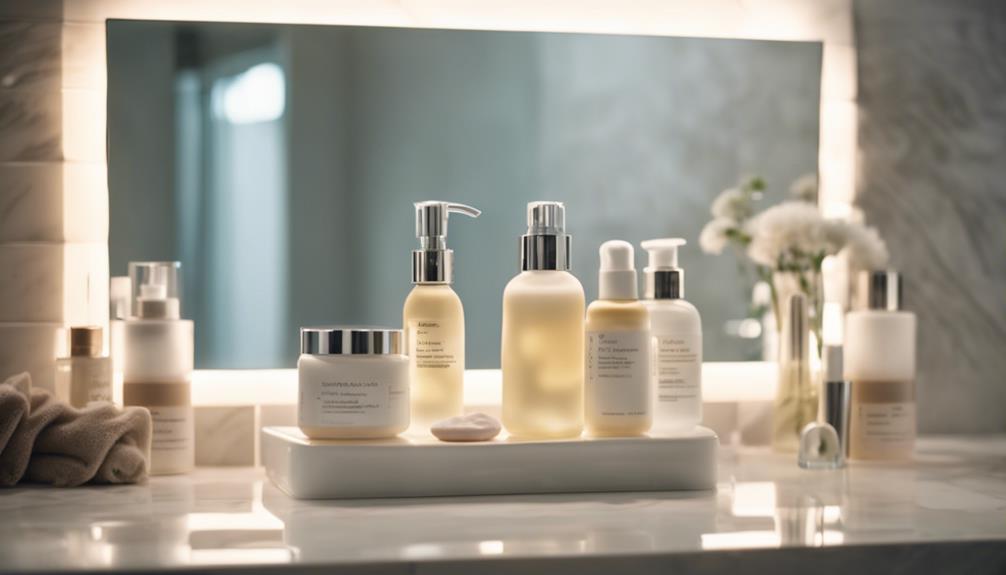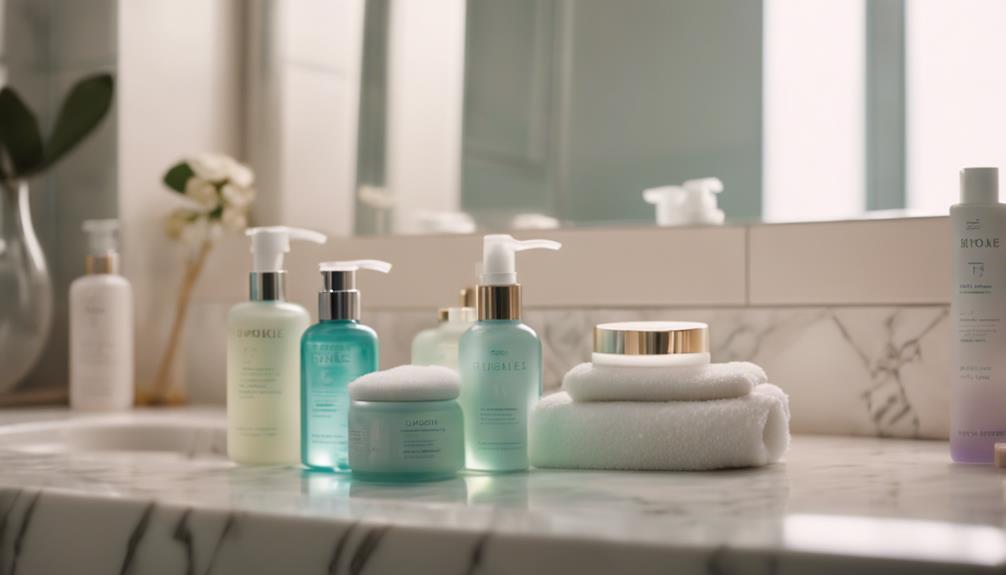Releasing tanning success begins with understanding your skin type! If you have lighter skin, it is important to be extra cautious and use sunscreen diligently to prevent burns. Even if you have darker skin, it is still necessary to monitor your sun exposure to avoid overexposure. Starting with shorter tanning sessions can be beneficial. Choosing the right products, such as bronzers with SPF, can give you a sun-kissed glow without the discomfort. By knowing your skin and how it reacts to the sun, you can develop a personalized tanning plan. Interested in more tips? Keep exploring!
Key Takeaways
- Identify your skin type to tailor your tanning strategy, ensuring safe and effective results.
- Assess your skin's reaction to sunlight to understand its sensitivity and avoid painful burns.
- Choose appropriate tanning products based on your skin type for optimal results and skin health.
- Gradually increase sun exposure and always use high SPF sunscreen to protect your skin.
Understanding Skin Types
Understanding your skin type is essential for effective tanning, as it determines how your skin reacts to UV exposure and influences your tanning strategy.
Think of your skin like a canvas—some canvases are light, while others are dark, and they each need different paints!
If you have lighter skin, you'll burn quicker than someone with deeper tones, who usually tans more easily. This means you need to be extra careful, using sunscreen and taking your time in the sun.
On the flip side, if you've got more melanin, you can enjoy the sun a bit more, but that doesn't mean you can go overboard!
Knowing your skin type helps you create a tanning plan that's just right for you.
Assessing Sunlight Reaction

Evaluating how your skin reacts to sunlight is essential for achieving a safe and effective tan while minimizing the risk of sunburn.
Have you ever noticed how your skin changes after spending time in the sun? Some folks tan easily, while others turn into lobsters! By observing your skin's response, you can figure out your tanning potential and what safety measures you need.
It's like a detective story—your skin is giving you clues! A sunlight reaction test can help you understand your sensitivity to UV rays, and trust me, knowing this can save you from painful burns.
Customizing Tanning Practices
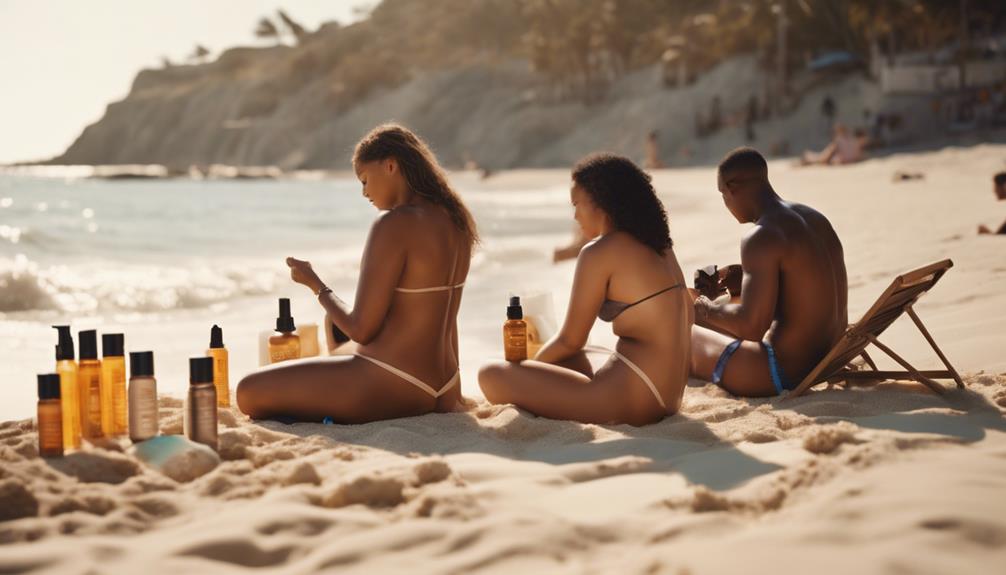
To achieve the best results, it's crucial to customize your tanning practices based on your skin type and sensitivity to UV rays.
Think of tanning like cooking: not every recipe works for everyone! If you're new to tanning, start with shorter sessions to avoid burns—nobody wants to look like a lobster!
You should also consider consulting a trained sunbed operator; they can help you create a plan that suits your unique skin.
Remember, your skin craves different care—like oil-free cleansers for oily skin or rich moisturizers for dry skin. By paying attention to your skin's needs, you'll not only look great but also keep it healthy.
Choosing the Right Products
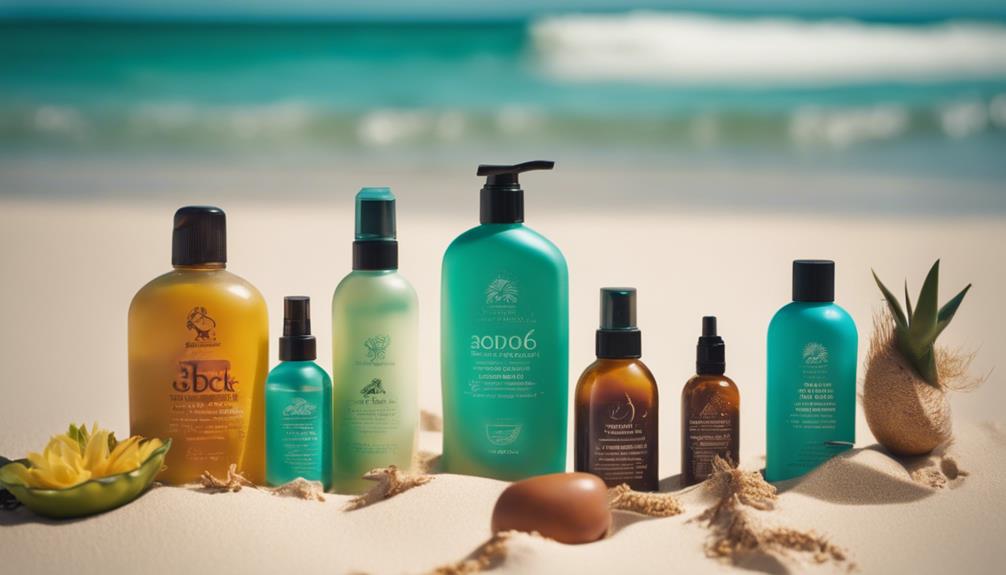
Choosing the right tanning products is just as important as customizing your tanning practices, ensuring you achieve a safe and natural-looking glow. Think of it like picking the perfect outfit for a special occasion; you want something that suits you!
If you have fair skin, opt for bronzers with SPF to protect yourself from those sneaky UV rays. For a golden glow without sun exposure, self-tanning bronzers work wonders. If oily skin's your thing, go for oil-free options to avoid that greasy look.
Before buying, test the bronzer on your skin—it's like trying on shoes before you buy them! Choosing wisely not only helps you tan beautifully but also keeps your skin happy and healthy.
Ready to glow?
Tips for Safe Tanning

Always protect your skin by using sunscreen with a high SPF, even during indoor tanning sessions, to minimize the risk of burns and long-term damage. Think of sunscreen as your skin's superhero cape—it's essential!
If you're new to tanning, start slow. Gradual exposure helps prevent painful burns, like how you wouldn't plunge into a pool without checking the water first. Listen to your skin: if it starts to feel warm or red, it's time to take a break!
And don't forget to hydrate; moisturizing your skin keeps it healthy and glowing.
Trends in Tanning Techniques

As you prioritize safe tanning practices, keeping up with the latest trends in tanning techniques can enhance your experience and results.
For starters, have you heard about custom tanning plans? Tailoring your sessions based on your skin type and melanin levels is all the rage.
You'll want to try out dermatologist-approved lotions that not only help you tan but also protect your sensitive skin.
And what about those new bronzers? They're designed to match your skin tone perfectly, giving you that natural glow without looking like you rolled in a bag of chips!
Plus, don't forget to hydrate, because moisturized skin means a longer-lasting tan.
Common Misconceptions About Tanning
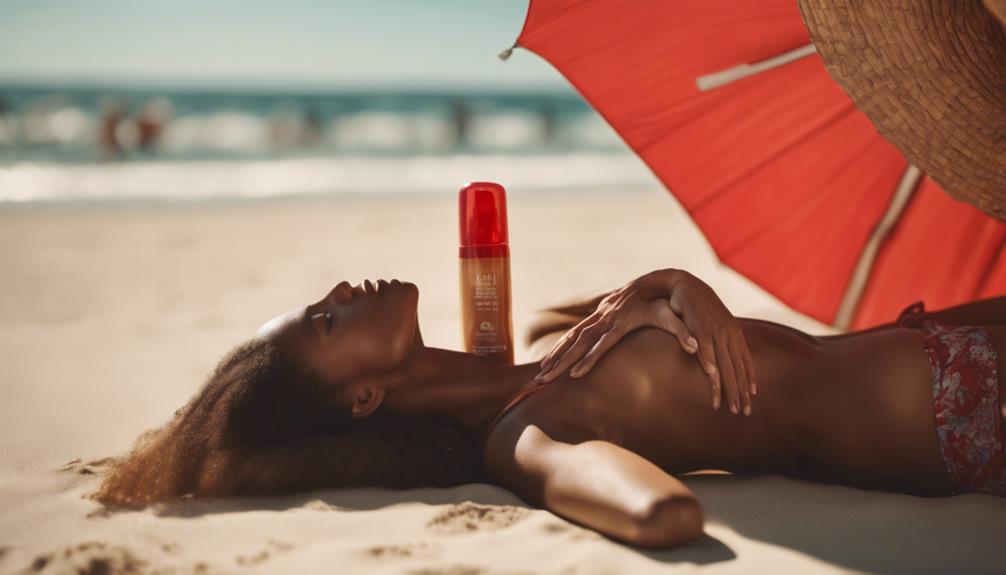
Many people mistakenly believe that all skin types tan the same way, ignoring the essential differences in melanin levels and sensitivity to UV exposure. You might think a tan is just a tan, but it's more like a complex recipe!
For instance, lighter skin types often burn quickly, while darker skin types may tan beautifully with less risk. It's like cooking—some dishes need more time in the oven!
Another misconception is that tanning beds are safe for everyone. They can be tricky, so check your skin type before diving in.
Frequently Asked Questions
How Often Should I Moisturize Before Tanning?
You should moisturize your skin daily before tanning, ideally a few hours prior to your session. This keeps your skin hydrated, enhances your tan, and helps prevent dryness and flaking during the tanning process.
Can I Tan if I'm Using Acne Medication?
Tanning while on acne medication's like dancing on thin ice. You can still tan, but be cautious; these meds may increase sensitivity. Always consult your dermatologist to guarantee safe sun exposure and protect your skin.
What Foods Enhance My Skin's Natural Tanning Ability?
To enhance your skin's natural tanning ability, focus on foods rich in carotenoids like carrots and sweet potatoes, as well as antioxidants found in berries. Hydration with water is essential too for ideal skin health.
Do Tanning Beds Cause More Damage Than Sun Exposure?
Yes, tanning beds can cause more damage than sun exposure. They emit concentrated UV rays, increasing your risk of skin cancer and premature aging. It's crucial to prioritize skin health and consider safer alternatives for tanning.
How Long Does a Tan Typically Last?
You might wonder how long that gorgeous tan will last, right? Typically, a tan lasts about 7 to 10 days. However, factors like skin type and care can greatly affect its longevity.
How Does Knowing Your Skin Help in Choosing the Right Tanning Lotion Shade?
Understanding your skin tone is crucial in finding the perfect tanning lotion shade unlock. Fair skin tones may benefit from lighter shades, while deeper tones can opt for darker shades. Knowing your skin’s undertones also plays a vital role in selecting the right tanning lotion to achieve a natural and flattering tan.
Conclusion
So, think of your tanning journey like a treasure hunt, where understanding your skin type is the map that leads you to that golden glow!
By knowing how your skin reacts to the sun and choosing the right products, you're setting yourself up for success.
Remember, it's all about enjoying the process while keeping your skin safe and healthy.
So, grab your sunscreen, step outside, and let your radiance shine through like the sun itself!


